The White Stork (Ciconia ciconia) is a magnificent bird known for its striking appearance, migratory feats, and cultural significance.
Found across Europe, Asia, and parts of Africa, this iconic species is captivating with its elegant flight and communal nesting habits.
With a distinctive black and white plumage and long, slender legs, the White Stork symbolizes themes of birth, renewal, and the interconnectedness of ecosystems.
Revered in folklore and celebrated for its role in maintaining ecological balance, the White Stork is a symbol of hope and resilience in the natural world. So, stay focused.
How to Identify White Stork?
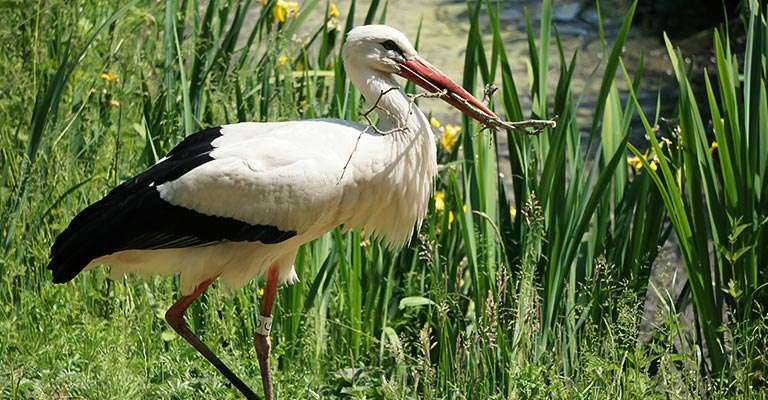
The White Stork (Ciconia ciconia) is an iconic bird known for its striking appearance and long migrations.
Identifying this species requires attention to several key features, including its size, plumage, behavior, and habitat. Here are some key points to help you recognize the White Stork:
Size and Shape
White Storks are large birds with a distinctive silhouette. They have long necks and legs, giving them an elegant appearance both in flight and when standing.
Adults typically measure between 100-115 cm (39-45 inches) in length, with a wingspan of around 195-215 cm (77-85 inches).
Plumage
The plumage of the White Stork is predominantly white, with contrasting black primary flight feathers visible when the bird is in flight. The wings are broad and rounded, while the tail is relatively short.
Juvenile White Storks have more mottled or greyish plumage, particularly on the head and neck, which gradually turns white as they mature.
Head and Bill
The head of the White Stork is white, often with a tinge of yellow or grey. Its long, pointed bill is greyish-black and straight and pointed, ideal for catching prey such as insects, small mammals, and amphibians.
Legs and Feet
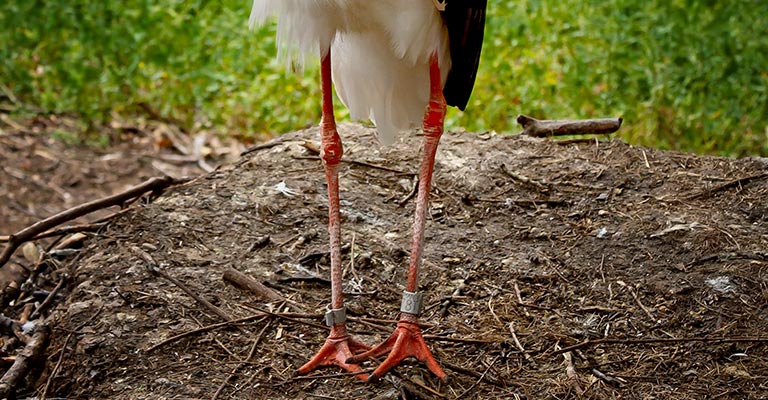
White Storks have long, slender legs that are pinkish-red in color. The feet are also pink and feature long, powerful toes adapted for wading in shallow water and grasping prey.
Flight
In flight, White Storks display a characteristic soaring pattern, often with their necks outstretched and legs trailing behind. They glide on thermal currents with slow, steady wingbeats, occasionally flapping their wings deeply.
Vocalizations
While generally silent outside of the breeding season, White Storks can produce a variety of vocalizations, including bill clattering, beak clapping, and low, guttural calls during courtship and nesting activities.
Behavior
White Storks are highly migratory birds, with populations in Europe and Asia undertaking long-distance migrations to Africa during winter.
During the breeding season, they form large nesting colonies on rooftops, chimneys, or specially constructed platforms. They are also known for their homing solid instincts, returning to the same nesting sites year after year.
Identifying the White Stork involves careful observation of its size, plumage, distinctive flight pattern, vocalizations, habitat, and behavior.
By paying attention to these key features, birdwatchers can confidently recognize this majestic species in the wild.
Taxonomy of White Stork
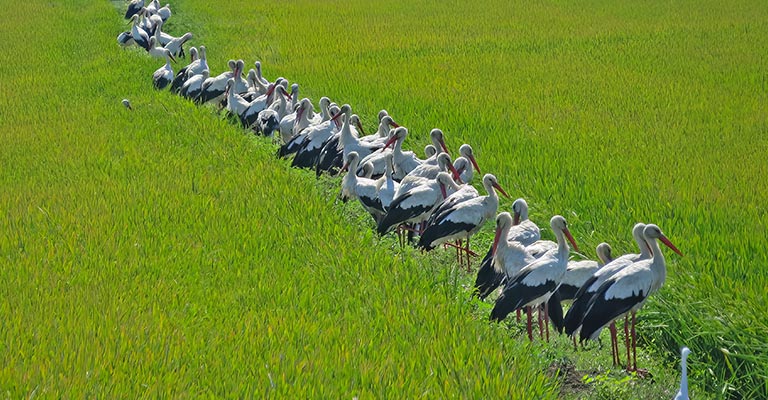
Find out the below table detailing the taxonomy of the White Stork:
| Domain | Eukaryota |
| Kingdom | Animalia |
| Phylum | Chordata |
| Class | Aves |
| Clade | Aequornithes |
| Order | Ciconiiformes (Bonaparte, 1854) |
| Family | Ciconiidae |
| Genus | Ciconia |
| Species | C. ciconia |
The White Stork (Ciconia ciconia) encompasses two subspecies, each with its unique characteristics and distribution:
C. c. ciconia (Nominate Subspecies)
This subspecies, described by Linnaeus in 1758, is widely distributed across Europe, northwestern Africa, and westernmost Asia.
During the breeding season, it can nest in various habitats, including wetlands, grasslands, and agricultural areas.
Migration patterns for this subspecies typically involve wintering in Africa south of the Sahara Desert, although some individuals may also migrate to India.
The nominate subspecies is known for its distinctive black and white plumage, graceful flight, and communal nesting habits.
Conservation efforts focus on protecting breeding and foraging habitats, reducing threats such as habitat loss and collisions with power lines, and promoting public awareness about preserving this iconic species.
C. c. asiatica (Asian Subspecies)
Described by Russian naturalist Nikolai Severtzov in 1873, this subspecies breeds in Turkestan and winters from Iran to India.
Compared to the nominate subspecies, C. c. asiatica is slightly larger.
Its breeding and wintering habitats may differ from those of the nominate subspecies, reflecting the diverse ecological niches occupied by White Storks across their range.
Conservation efforts for C. c. asiatica may focus on addressing specific threats within its range, such as habitat degradation and hunting pressure.
Studying both subspecies’ behavior, ecology, and conservation needs contributes to a comprehensive understanding of the White Stork’s role in ecosystems and the challenges it faces in the wild.
White Stork Life History
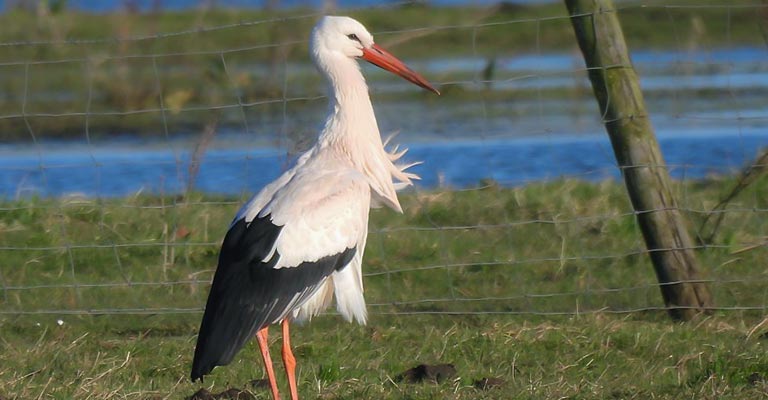
The White Stork (Ciconia ciconia) is a fascinating bird species that has captivated human interest for centuries with its striking appearance and intriguing behaviors.
This majestic bird, known for its long migrations and association with human settlements, has a rich life history encompassing various aspects,, from food habits to conservation efforts. Let’s delve into each of these facets in detail.
Food
White Storks are opportunistic feeders with a diverse diet. Their primary food sources include insects, small mammals, amphibians, reptiles, and even small birds.
They are adept hunters, using their sharp bills and quick reflexes to catch prey on the ground and in shallow water.
During the breeding season, storks may also forage for food in agricultural fields, where they can consume earthworms, insects, and rodents.
Habitat
White Storks are highly adaptable birds that inhabit various habitats across their range. They are commonly found in open landscapes such as grasslands, wetlands, marshes, meadows, and agricultural fields.
These habitats provide ample opportunities for foraging and nesting and access to water sources for drinking and bathing.
Range Map
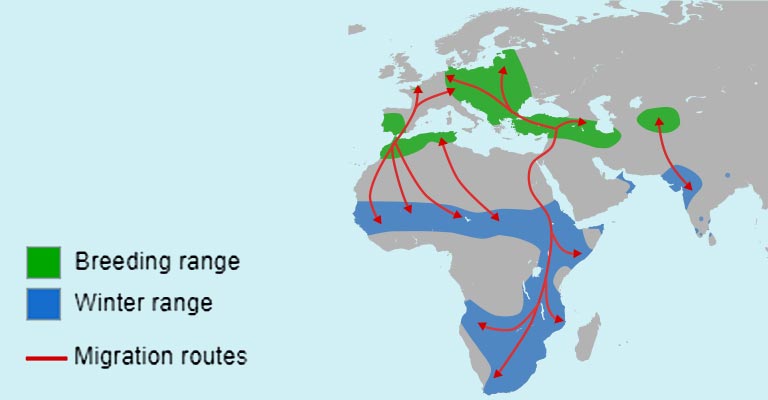
The White Stork has a vast range across Europe, Asia, and parts of Africa. During the breeding season, they are distributed across much of Europe and western Asia, with populations breeding as far east as Mongolia.
In winter, many White Storks migrate to sub-Saharan Africa, where they spend the non-breeding season in warmer climates.
Hunting Habit
White Storks employ various hunting strategies depending on their prey and habitat. In grasslands and meadows, they may stalk insects and small mammals on foot, using their long legs to stride through the vegetation.
They wade through shallow water in wetlands, probing with their bills to catch fish, frogs, and other aquatic prey.
Storks also follow agricultural machinery to catch insects and small animals disturbed by plowing or harvesting.
Breeding
Breeding in White Storks typically occurs in large colonies, where pairs build large nests of sticks and other vegetation atop trees, cliffs, or artificial structures.
Both parents share incubation duties, and once the eggs hatch, they work together to feed and care for the chicks.
White Storks are known for their strong pair bonds and fidelity to nesting sites, often returning to the same colony year after year.
Diseases and Treatment
Like many bird species, White Storks are susceptible to various diseases and health issues. Common threats include avian influenza, West Nile virus, and habitat degradation.
Conservation efforts often include monitoring for disease outbreaks, providing veterinary care to sick or injured birds, and habitat restoration to mitigate the impacts of human activities.
Conservation
Despite being a widespread species, White Storks face several conservation challenges, including habitat loss, pollution, and collisions with power lines.
Conservation efforts focus on protecting critical breeding and foraging habitats, reducing human disturbances, and promoting public awareness and education about conserving these iconic birds.
The life history of the White Stork is a testament to its remarkable adaptability and resilience in the face of environmental challenges.
By understanding and addressing the various factors that influence their survival, we can ensure the continued presence of these majestic birds in our ecosystems.
Nesting Habit of White Stork
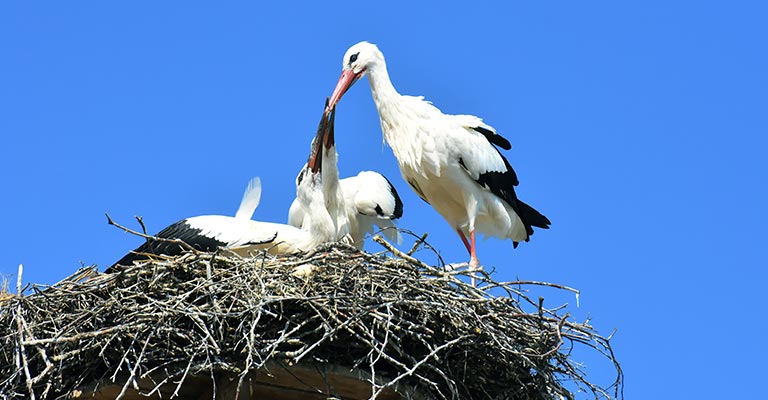
The following table outlines the nesting details of the White Stork:
| Nesting Details | Facts |
| Clutch Size | Typically 2-5 eggs, commonly 3-4 |
| Number of Broods | Large stick nests, built atop trees, cliffs, or artificial structures such as rooftops or telegraph poles |
| Egg Length | Approximately 7.5-8.5 centimeters (3-3.3 inches) |
| Egg Width | Approximately 5.5-6.5 centimeters (2.2-2.6 inches) |
| Incubation Period | Around 30-33 days |
| Nestling Period | Approximately 55-60 days |
| Egg Description | Smooth, glossy surface; white to pale blue-green hue, often with faint markings |
| Nest Description | Often in colonies, with nests closely spaced, especially on suitable artificial structures |
| Nest Location | Often in colonies, with nests closely spaced, especially on suitable man-made structures |
The White Stork is known for its elaborate nesting habits, typically constructing large stick nests in colonies atop trees, cliffs, or artificial structures.
These nests are robust structures that provide a stable platform for incubating eggs and raising nestlings. The clutch size typically ranges from 2 to 5 eggs, with the most common number being 3 or 4.
Both parents carry out incubation, which lasts for approximately 30 to 33 days. Once the eggs hatch, the nestlings are cared for by both parents and remain in the nest for around 55 to 60 days before fledging.
A smooth, glossy surface characterizes the eggs themselves, and they are typically white to pale blue-green, often with faint markings.
10 Fun Facts About White Stork
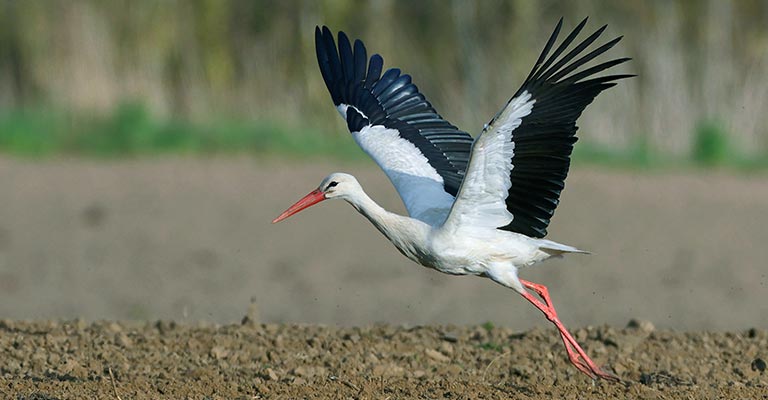
The White Stork (Ciconia ciconia) is a captivating bird species with a rich history and remarkable characteristics. Here are 10 fun facts that highlight the unique traits and behaviors of these iconic birds:
- Migratory Marvels: White Storks are famous for their long-distance migrations, traveling thousands of kilometers between breeding and wintering grounds. Some populations migrate from Europe to Africa, crossing the Sahara Desert.
- Nest Sharing: White Storks often nest in colonies, with multiple pairs sharing the same nesting site. These colonies can contain hundreds of nests, providing a sense of community among these birds.
- Good Samaritans: White Storks are symbols of good luck and fertility in some cultures. They are welcomed in communities, with people even providing platforms for nesting on rooftops and chimneys.
- Thermal Soaring: White Storks use thermal air currents to soar effortlessly across vast distances during migration. By gliding on these thermals, they conserve energy during their arduous journey.
- Longevity: White Storks are known for longevity, with some individuals living for over 30 years in the wild. Their ability to adapt to various habitats and migration routes contributes to their impressive lifespan.
- Courtship Rituals: During the breeding season, White Storks engage in elaborate courtship displays, including bill-clattering, bowing, and sky-pointing. These rituals strengthen pair bonds and ensure successful reproduction.
- Regurgitation Feeding: White Stork parents regurgitate food into nestlings’ mouths when feeding their young. This behavior is essential for the development of the chicks and fosters bonding between parents and offspring.
- Noisy Nests: White Storks are not known for their vocalizations, but their nesting colonies can be pretty loud, especially during the breeding season. The clattering of bills and the sounds of chicks begging for food create a cacophony of sounds.
- Conservation Success: While some populations of White Storks face threats such as habitat loss and collisions with power lines, conservation efforts have led to population increases in certain regions. These success stories demonstrate the importance of conservation initiatives in protecting this iconic species.
- Cultural Significance: Historically, white Storks have been revered in various cultures and folklore. They are associated with myths and legends, symbolizing themes of birth, renewal, and the cycle of life.
These fascinating facts shed light on the unique biology and behavior of the White Stork, highlighting its importance both ecologically and culturally.
Wrapping Up
The White Stork is a captivating bird species that is enchanted with its long migrations, communal nesting habits, and cultural significance.
From its graceful flight to its elaborate courtship rituals, the White Stork embodies the wonder of nature and the intricate web of connections between species and environments.
Despite facing conservation challenges, efforts to protect and preserve these majestic birds are essential to ensuring their continued presence in our world. Thank you for your support.